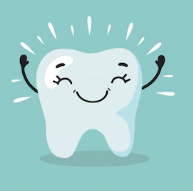Finding white, stringy material in your mouth first thing in the morning can look alarming, but the cause is actually simple, and harmless. This material is a buildup of plaque bacteria mixed with toothpaste ingredients, and it becomes more noticeable when your mouth dries out overnight. Fortunately, it’s nothing to be concerned about, and there are straightforward ways to reduce it.
What Is the White Stringy Stuff?
The white strands you see in the morning are made of aggregated bacterial plaque. These are the same bacteria that live naturally on your gums, tongue, and teeth, but instead of being spread out, they clump together into soft, string-like pieces.
Typical features:
- A thin, white, filmy residue
- Often sticks to cheeks, lips, or the tongue
- Easily wiped away with a finger
- No burning, pain, or irritation
- Very soft and slippery in texture
Here’s what it usually resembles in photos:
White stringy buildup shown on oral tissues
What the White Stuff Is Not
People often confuse this residue with other oral conditions, but it does not indicate an infection or allergic reaction.
Common misdiagnoses:
❌ Oral thrush
- Thrush produces white patches, not stringy pieces.
- The texture, appearance, and distribution are very different.
❌ Allergic reaction
- Allergies cause redness, swelling, irritation, and discomfort.
- The white material is not associated with inflammation of any kind.
If there’s no redness, pain, or persistent lesions, what you’re seeing is not an infection.
What Causes It?
Two major factors lead to this white stringy buildup:
1. Toothpaste Ingredients With Antibacterial Action
Several components commonly found in toothpaste can dislodge plaque from your teeth and cause it to accumulate elsewhere in your mouth.
Key contributors:
- SLS (Sodium Lauryl Sulfate):
A strong detergent that strips food particles and bacteria from enamel. Once removed, the bacteria often clump together as white strands. - Stannous fluoride:
This enhanced fluoride type has strong antibacterial properties, causing more plaque to be eliminated and pulled together. - Anti-tartar agents (pyrophosphates):
These prevent tartar from forming on teeth. When tartar can’t mineralize on enamel, the displaced debris may stick to soft tissues instead.
Toothpaste containing stannous fluoride + SLS is especially known for producing this effect.
2. Dry Mouth (Xerostomia)
Dry mouth is the other major factor.
When your mouth is well-lubricated with saliva, this accumulated plaque film is washed away and swallowed throughout the day and night—usually without you even noticing.
When your mouth becomes dry:
- Saliva flow decreases
- The white plaque film doesn’t get rinsed away
- It sticks to cheeks, lips, or the tongue until you wake up
This is why people with dry mouth notice the white buildup far more often.
Why These Two Factors Together Cause the Problem
- Antibacterial toothpaste ingredients loosen and gather the plaque.
- Dry mouth allows that plaque clump to stay visible overnight.
- Without enough saliva, the material doesn’t get swallowed or cleared.
The result? White stringy stuff waiting for you in the morning.
What You Should Do About It
The good news: it’s harmless. You don’t need medication, and it’s not a sign of disease.
However, if you want to reduce how often you see it, here are two effective strategies:
1. Increase Water Intake
Staying hydrated boosts saliva production. With more saliva:
- The plaque clumps are diluted
- They get washed away naturally
- You’re less likely to see them stuck to your cheeks in the morning
Adequate hydration is the easiest and most reliable fix.
2. Try a Different Toothpaste
If your toothpaste contains strong antibacterial ingredients, switching to a milder formula may help.
People often notice the buildup more when using:
- SLS-heavy pastes
- Stannous fluoride pastes
- Anti-tartar pastes
A gentler toothpaste can reduce how much plaque gets stripped off at once.
Should You Be Worried?
Not at all. This phenomenon happens to many people and doesn’t indicate illness. Even with toothpaste changes and good hydration, some amount of this film may still form, it varies from person to person.
Disclaimer
The contents of this website, such as text, graphics, images, and other material are for informational purposes only and are not intended to be substituted for professional medical advice, diagnosis, or treatment. Nothing on this website constitutes the practice of medicine, law or any other regulated profession.
No two mouths are the same, and each oral situation is unique. As such, it isn’t possible to give comprehensive advice or diagnose oral conditions based on articles alone. The best way to ensure you’re getting the best dental care possible is to visit a dentist in person for an examination and consultation.
SAVE TIME AND MONEY AT ANY DENTIST

Less dental work is healthier for you. Learn what you can do to minimize the cost of dental procedures and avoid the dentist altogether!

